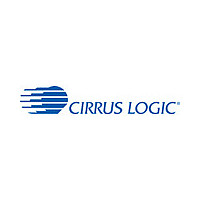CDB4955A Cirrus Logic Inc, CDB4955A Datasheet - Page 26

CDB4955A
Manufacturer Part Number
CDB4955A
Description
EVALUATION BOARD FOR CS4955A
Manufacturer
Cirrus Logic Inc
Specifications of CDB4955A
Main Purpose
Video, Video Processing
Embedded
Yes, Other
Utilized Ic / Part
CS4955
Primary Attributes
NTSC/PAL Digital Video Encoder
Secondary Attributes
Graphical User Interface, RS-232 Interface
Operating Frequency
27 MHz
Interface Type
RS-232, Composite, RGB, S-Video
Operating Supply Voltage
3.3 V, 5 V
Software
Software Included
Silicon Manufacturer
Cirrus Logic
Silicon Core Number
CS4955
Kit Application Type
Audio / Video / TV
Application Sub Type
Encoder / Decoder
Kit Contents
Evaluation Board
Rohs Compliant
No
For Use With/related Products
CS4954
Lead Free Status / RoHS Status
Contains lead / RoHS non-compliant
Lead Free Status / RoHS Status
Lead free / RoHS Compliant, Contains lead / RoHS non-compliant
order to maintain the strict timing requirements of
the teletext standard.
Table
for teletext instantiation into the analog signals for
the various supported TV formats. TTXHS is the
time between the leading edge of the HSYNC sig-
nal and the rising edge of the first TTXRQ signal
and consists of multiples of 27 MHz clock cycles
Note that with increasing values of TTXHS the
time t
for the internal pipeline delay due to processing,
synchronization and instantiation of the teletext
data. The time t
register.
Note that the teletext databits are shaped according
to the ITU R.BT653-2 specifications.
If register 0×31 bit 3 is set, (TTX_WINDOW=1)
the teletext is in windows mode. In this mode, the
request pulses become a window where the bit pro-
vided on the TTXDAT pin is valid (see Figure 13).
In pulse mode (where the number of request pulses
are determined by the teletext standard chosen), the
length of the window must be programmed by the
user independent of the teletext standard used. The
length of the window is programmed through reg-
ister 0×29 TTXHS (start of window), register
0×2A (TTXHD) and register 0×31 (end of win-
dow). The end-of-window register is a 11 bit value.
In teletext window mode, the TTXHS value can be
selected using the values in Table 5. Although
these values may need to be adjusted to match your
system delay, use the following equation to com-
pute the TTXHD value:
TTXHS + 1402 = TTXHD (for Europe)
TTXHS + 1151 = TTXHD (for WST)
26
TTX
5
shows how to program the TTXHS register
increases as well. The time t
PD
is dependant on the TTXHD
FD
accounts
TTXHS + 1122 = TTXHD (for NABTS)
5.12
The CS4954/5 is equipped with a color bar genera-
tor that is enabled through the CBAR bit of the
CONTROL_1 Register. The color bar generator
works in Master or Slave Mode and has no effect
on the video input/output timing. If the CS4954/5 is
configured for Slave Mode color bars, proper video
timing must be present on the HSYNC and
VSYNC pins for the color bars to be displayed.
Given proper Slave Mode input timing or Master
Mode timing, the color bar generator will override
the video input pixel data.
The output of the color bar generator is instantiated
after the chroma interpolation filter and before the
luma delay line. The generated color bar numbers
are for 100% amplitude, 100% saturation NTSC
EIA color bars or 100% amplitude, 100% satura-
tion PAL EBU color bars. For PAL color bars, the
CS4954/5 generates NTSC color bar values, which
are very close to standard PAL values. The exact
luma and chroma values are listed in Table 6.
PAL-N (non Arg.)
PAL-N (non Arg.)
TV standard
PAL-N (Arg.)
PAL-N (Arg.)
NTSC-M
NTSC-M
PAL-M
PAL-M
PAL-B
PAL-B
Color Bar Generator
Table 5. Teletext timing parameters
Europe TTX
Europe TTX
Europe TTX
WST-NTSC
WST-NTSC
WST-PAL
WST-PAL
WST-PAL
standard
Teletext
NABTS
NABTS
CS4954 CS4955
(register
TTXHS
value)
161
142
204
163
161
142
204
163
204
163
DS278F6
10.5 μs
12.0 μs
10.5 μs
10.5 μs
12.0 μs
10.5 μs
12.0 μs
10.5 μs
9.8 μs
9.8 μs
t
TTX



















